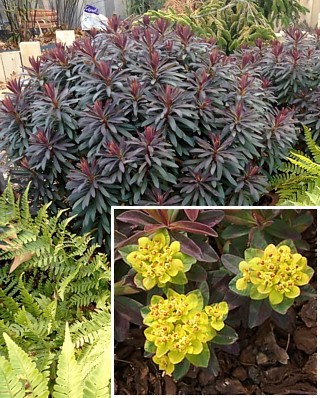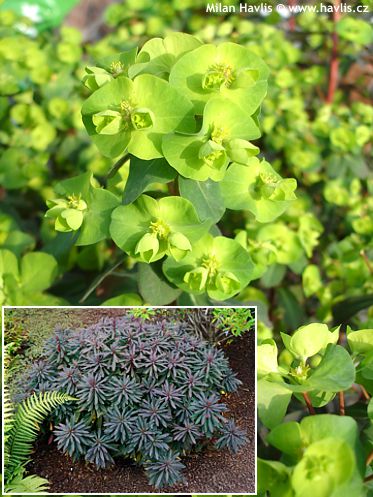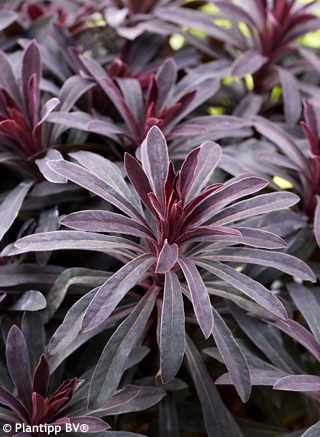
Euphorbia polychroma 'BONFIRE' wood spurge


Euphorbia
Euphorbia - spurge represents a large family of plants where the most eye-catching ones are not hardy enough for Central European climate (zone 6). However, there are also perennials that are perfectly fine here and almost care-free. Such as wood spurge.
Bonfire is a new variety of wood spurge patented in 2005 by Mary Ann Faria from Rhode Island. It forms a compact, densely branched, mounded clump with narrowly elongated, deep purple red foliage, and typical spurge-like flowers (cyathia cupped by involucres in terminal cymes). The flowers are bright yellow-green which contrasts perfectly with the burgundy red leaves. Inflorescence may last for as long as 2 months.
Wood spurge will grow in almost any well-drained garden soil provided it is protected the extremes of both wet and dry conditions. Cut off all stems from previous year in early spring. Its foliage colour calls for a location where it will be appreciated best – in a rockery surrounded by white or light grey stones/pebbles or, if mulched by bark, mixed with plants of contrasting foliage. Hardy to about -29°C (USDA zone 5).
Last update: 29-01-2013




































